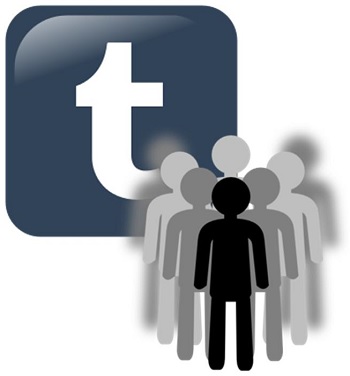The company has now rolled out mobile app install ads that are distributed as sponsored posts users can share.
Tumblr has just announced its latest in social media marketing over mobile in the form of an ad unit that it is calling its “Tumblr Sponsored Apps,” which will give app publishers the opportunity to target Millennials, who are the primary audience of the blogging service.
That demographic being targeted is also a group that is extremely mobile and that are large app users.
The purpose of the social media marketing will be to help to drive users to Google Play and to the iTunes App Store in order to encourage the download of new mobile apps. This is a type of mobile marketing known as “app install ads” and they have been a serious business on Facebook, and Twitter, the two largest social network rivals of Tumblr. In fact, 85 percent of Facebook’s ad revenue comes from mobile, and that company adopted this type of ad earlier in 2014.
That said, the social media marketing strategy at Tumblr is slightly different from that of Facebook and Twitter.
 The app install adds are designed to appear as small posts that look somewhat like a card, such as the ones that are found in Twitter streams and Facebook News Feeds. However, they are unrestricted in terms of their format, and are actually posted in the form of sponsored blogs.
The app install adds are designed to appear as small posts that look somewhat like a card, such as the ones that are found in Twitter streams and Facebook News Feeds. However, they are unrestricted in terms of their format, and are actually posted in the form of sponsored blogs.
The service debuted this week with mobile ads from the Betaworks, Big Fish, and GREE publishers. Their GIFs and photosets were featured, but according to the creative strategy manager at Tumblr, Max Sebala “the sky’s the limit in terms of creative.” Since the ads are actually displayed in the form of blog posts, it makes it possible for readers to share and re-share them throughout the Tumblr network by way of its reblogging feature.
To start, these social media marketing ads will be appearing exclusively on the dashboards of mobile Tumblr users. However, when the content is re-shared, it can be viewed by any user of the blogging network, including both those over mobile and using the service on laptops and desktops.
These consumers are also concerned about spam when it comes to the smartphone based marketing they receive.
Research conducted by On Device on behalf of MobPartner has now revealed some interesting insight with regards to the way that mobile ads are being used to reach travelers and what those consumers feel about this advertising.
The study was conducted earlier this year with the participation of 1,000 device using travelers.
The research looked into the way that travelers engaged in the planning and research of their trips on their laptops, smartphones, and tablets, particularly when it came to the receipt of online and mobile ads. What they determined was that nearly two out of every five respondents to the survey stated that they were reluctant to click on mobile marketing advertisements as they have concern that it could potentially be spam.
Among the respondents, 33 percent felt that the mobile ads that they received were not relevant to them.
 In fact, the vast majority of the respondents to this research were not among those that felt that mobile marketing was effective. Only 17 percent claimed that they felt that the mobile advertising that they received was effective. Another 52 percent were uncertain as to whether or not they felt that it was effective.
In fact, the vast majority of the respondents to this research were not among those that felt that mobile marketing was effective. Only 17 percent claimed that they felt that the mobile advertising that they received was effective. Another 52 percent were uncertain as to whether or not they felt that it was effective.
Among the most important factors in the creation of mobile advertising as a channel that travelers will take seriously is in the familiarity and comfort components with the brands themselves. The study determined that one in three smartphone users would be willing to click on a digital ad if they believe that it was created by a brand that they trust. Moreover one in four of those respondents said that they had then made a purchase from that brand after having clicked their ad.
When it came to mobile ads that used video instead of just static display content, the advertisements that were viewed over smartphones and tablets the most frequently were those that included video (33 percnet0. However, when travel brands featured apps or mobile games, they generated a recall value of 32 percent. Regardless, the largest common opinion that seems to continue in the minds of travelers with respect to mobile marketing as a whole appeared to be doubt.
 The app install adds are designed to appear as small posts that look somewhat like a card, such as the ones that are found in Twitter streams and Facebook News Feeds. However, they are unrestricted in terms of their format, and are actually posted in the form of sponsored blogs.
The app install adds are designed to appear as small posts that look somewhat like a card, such as the ones that are found in Twitter streams and Facebook News Feeds. However, they are unrestricted in terms of their format, and are actually posted in the form of sponsored blogs.
 In fact, the vast majority of the respondents to this research were not among those that felt that mobile marketing was effective. Only 17 percent claimed that they felt that the mobile advertising that they received was effective. Another 52 percent were uncertain as to whether or not they felt that it was effective.
In fact, the vast majority of the respondents to this research were not among those that felt that mobile marketing was effective. Only 17 percent claimed that they felt that the mobile advertising that they received was effective. Another 52 percent were uncertain as to whether or not they felt that it was effective.